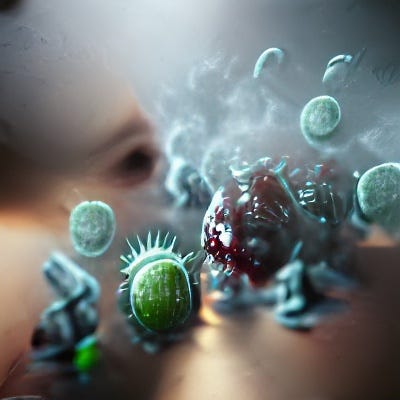Understanding Antigens and Antibodies: Key Concepts in Immunology
Written on
Chapter 1: Introduction to Scientific Literacy
Following my previous series on Scientific Literacy, I am launching a new series focused on the fundamental concepts in science. These brief explanations aim to enhance your understanding of scientific terms and processes, laying the groundwork for your scientific literacy. If you have specific topics in mind that you’d like me to address, please feel free to comment. My background includes a PhD in microbiology/biochemistry, and I'm eager to explore new subjects beyond my usual expertise.
Previous entries in the Science Fundamentals series covered: DNA, PCR, and Agarose Gel Electrophoresis.
Section 1.1: What Are Antigens?
This installment centers on antigens, a crucial topic in the ongoing discussion about the differences between COVID PCR tests and rapid antigen tests.
To define an antigen, it is a term derived from the 19th century, originally denoting any substance that prompts the production of antibodies. Over time, the definition has narrowed to refer to any entity that can bind to an antibody. This subtle shift allows for a broader range of substances to be classified as antigens without the need to demonstrate that they can generate antibodies.
Subsection 1.1.1: Understanding Antibodies
Antibodies are proteins utilized by the immune system to detect and neutralize harmful invaders such as bacteria, fungi, and viruses. They typically have a “Y” shape, with the two tips serving as binding sites for antigens, while the base connects to other immune cells. These proteins are highly selective, targeting specific strains of specific species, and recognizing particular proteins. Antibodies can either bind to invaders, signaling the immune system to respond, or surround them to effectively isolate them from the body, preventing potential harm.

Section 1.2: Types of Antigens
Antigens can be categorized as "external" or "internal." External antigens, such as pollen or gluten, enter the body through inhalation or ingestion. These are usually recognized and managed by standard immune cells, often resulting in minimal issues, typically classified as ‘subclinical’—a fancy term for situations handled at home rather than requiring hospital visits.
Internal antigens present a greater challenge. These may include viral antigens released when a virus invades cells, hijacking them for replication. More concerning is when the internal antigen originates from the body itself. In a healthy individual, virus-infected cells are eliminated by specialized cells known as Natural Killer cells. However, internal antigens can also be components of one’s own body. While the immune system is generally trained to avoid attacking self, complications can arise, leading to autoimmune disorders, which can be quite damaging.
Chapter 2: Conclusion and Future Topics
I hope this brief overview of antigens and antibodies has proven helpful. If you found this information valuable, please let me know. Additionally, if you have suggestions for future topics in the Science Fundamentals series, I would be delighted to explore those areas for you.
Stay tuned for the next discussion, which will focus on antigen testing—a topic that has garnered significant media attention, particularly regarding its comparison to the PCR test for COVID-19. After this series, I may delve into the historical aspects of science. If there's anything you wish to learn more about, don't hesitate to reach out.
Glossary
- Antigen: Any substance capable of binding to an antibody, recognized by the immune system.
- Antibody: A typically Y-shaped protein that the immune system employs to identify and neutralize foreign invaders.
- Natural Killer Cells: Specialized immune cells responsible for eliminating virus-infected cells.
- Autoimmune: A condition where the immune system fails to distinguish between self and non-self, leading to attacks on the body's own tissues.